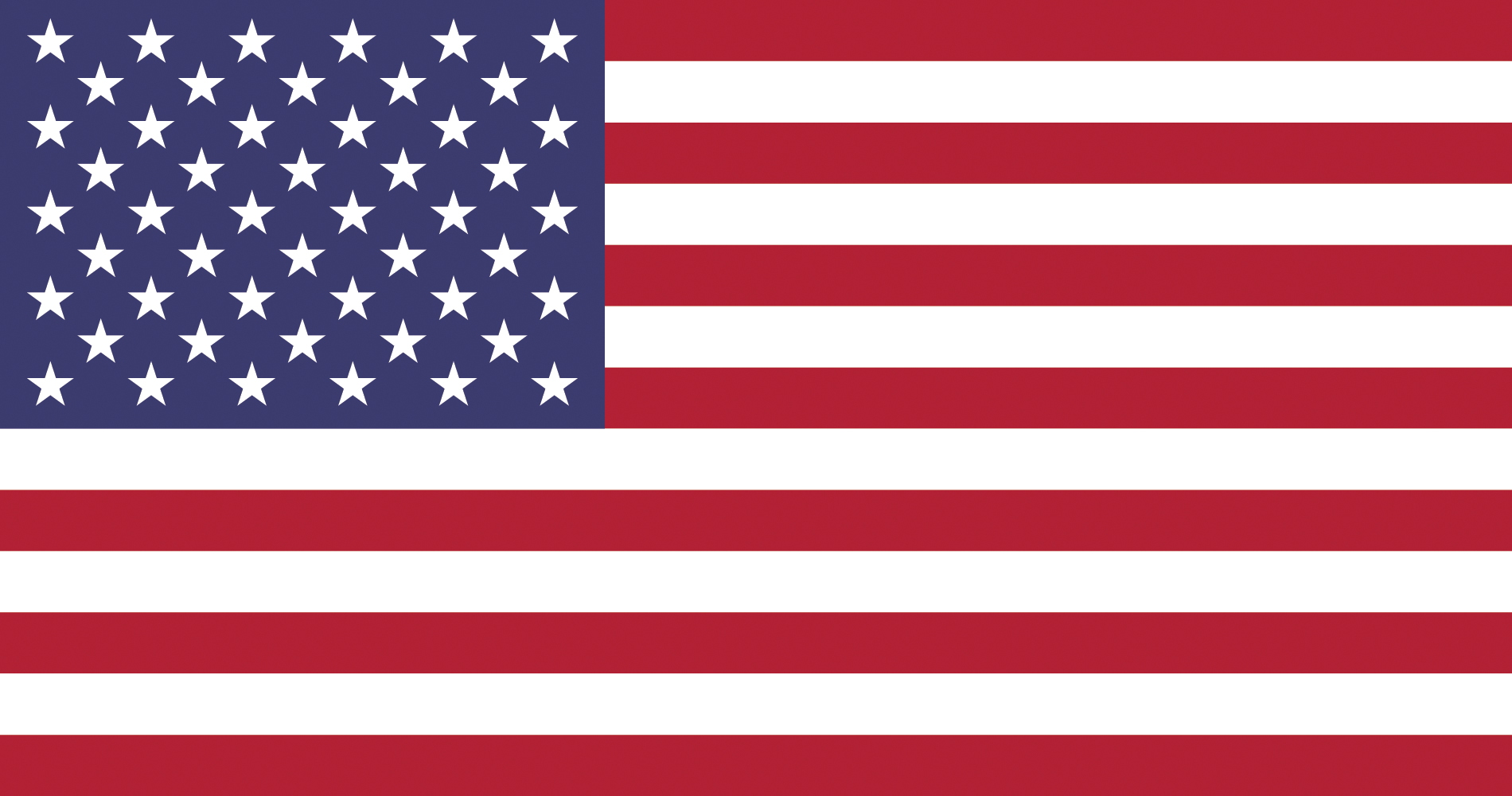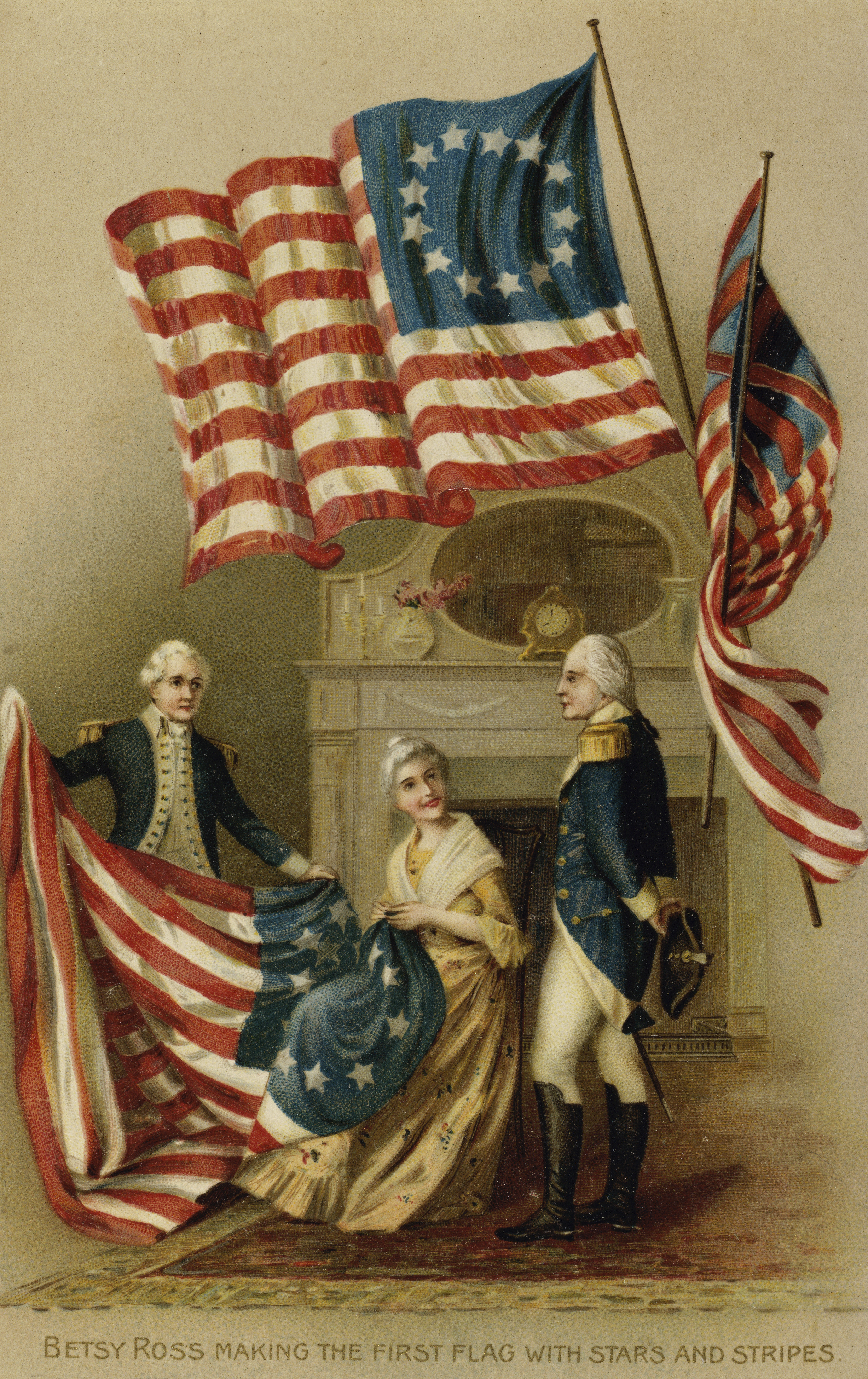United States flag is the best-known symbol of the United States. The flag features 50 white stars, representing the 50 U.S. states, and 13 red and white stripes, representing the original 13 American Colonies. The stars appear on a blue background in the flag’s canton (upper hoist corner). The flag stands for the land, the people, the government, and the ideals of the United States. Some features of the design have changed since the Continental Congress first adopted an official flag in 1777. New versions of the flag’s design have reflected the growth of the United States.

The U.S. flag is commonly known as the Stars and Stripes, the Star-Spangled Banner, or Old Glory. Francis Scott Key, an American lawyer and verse writer, first called the flag the Star-Spangled Banner in 1814 when he wrote the poem that later became the national anthem (see Star-Spangled Banner ). William Driver, an American sea captain, gave the name Old Glory to the flag in 1824.
The first American flags.
During the American Revolution (1775-1783), also called the Revolutionary War in America, the colonists fought under many military flags. The first American national flag, representing all the colonies, was the Continental Colors—sometimes mistakenly called the Cambridge Flag or Grand Union. This flag, on which the British Union flag appeared at the upper hoist corner, served as the unofficial American flag from 1775 to 1777. It was used mostly on ships, forts, and government buildings.
After the adoption of the Declaration of Independence on July 4, 1776, the British flag was no longer appropriate as part of the U.S. flag. On June 14, 1777, the Continental Congress resolved that “the Flag of the united states be 13 stripes alternate red and white,” and that “the Union be 13 stars white in a blue field representing a new constellation.”
No one knows for sure who designed the flag, nor who made the first one. Francis Hopkinson, a New Jersey delegate to the Continental Congress, claimed that he had designed it. Most scholars accept this claim. A popular story holds that Betsy Ross, a Philadelphia seamstress who made flags during the American Revolution, made the first U.S. flag. However, most scholars doubt that this story is true. See Ross, Betsy .

The colors.
No surviving record explains why red, white, and blue were chosen as the colors for the flag, although they had long been the colors of the British colonies in America. In 1782, the Congress of the Confederation chose these same colors for the newly designed Great Seal of the United States. A report sent to Congress about the seal listed meanings for the colors. Red is for hardiness and valor (courage), white for purity and innocence, and blue for vigilance, perseverance, and justice.
The stripes
in the flag stand for the 13 original colonies. The use of stripes may have been adopted from the flag believed to have been used by the Sons of Liberty, a group of colonial patriots. That flag had five red and four white vertical stripes.
The stars.
The resolution passed by the Continental Congress in 1777 stated that the flag should have 13 stars. But the resolution did not indicate how the stars should be arranged. A popular version showed the stars in alternating rows of 3, 2, 3, 2, and 3 stars. Another design had 12 stars in a circle with the 13th star in the center. A flag with 13 stars in a circle is often associated with the period. However, there is little evidence that such a design was commonly used. There is no historical basis for assigning each star to a particular state.
Changes in the flag.
By 1792, two new states had joined the Union, and Congress decided to add two stars and two stripes to the flag. It established a 15-stripe flag to be used after May 1, 1795.
By the end of 1817, five more states had come into the Union, but Congress felt that a flag with 20 stars and 20 stripes would be too cluttered. Peter Wendover, a representative from New York, proposed a flag of 13 stripes, with a star for each state. Congress accepted the idea. On April 4, 1818, it set the number of stripes at 13 again. It also ordered that a new star be added to the flag on the July 4th after each new state joined the Union.
Because Congress still did not indicate how the stars should be arranged, flag makers used various designs. For example, Samuel Chester Reid’s “Grand Luminary” (Great Star) proposal of 1818 had its 20 stars arranged in the form of a five-pointed star. That same year, the Navy worked out an official 20-star design, later modified by President James Monroe. Army patterns for flag stars, made whenever a new state entered the Union, did not always correspond to the Navy versions.
During the American Civil War (1861-1865), the administration of President Abraham Lincoln refused to have the stars for Southern States omitted from the flag. Union troops thus fought under a 33-star flag the first three months of the war, a 34-star flag until 1863, and a 35-star flag until the war’s end.
No design was officially set for the 46-star flag used from 1908 to 1912. Presidential orders fixed the positions of the stars in 1912 (for 48 stars), in 1959 (for 49 and, later that year, for 50).
The flag in use today was established on July 4, 1960, when a 50th star was added to represent Hawaii. Hawaii had become the 50th state on Aug. 21, 1959.
Displaying the flag.
In 1923 and 1924, a national Flag Code was drafted by patriotic organizations. In 1942, that code, with some changes, was adopted by Congress. It established rules for handling and displaying the flag. The rules include guidelines for carrying, hanging, raising and lowering, and saluting the flag. For instance, the flag should never be allowed to touch the ground. The flag may be flown at half-mast, usually halfway up the staff, to indicate a period of mourning. In 2007, the code was changed to allow state governors to call for the flag to be at half-mast to honor those who have died while in active military service.
When a flag is no longer fit for display, the Flag Code says it should be destroyed in some dignified way, preferably by burning. However, some people have burned usable flags as a means of protesting the policies of the U.S. government. In 1989, and again in 1990, the Supreme Court of the United States ruled that the First Amendment to the U.S. Constitution protects the rights of citizens who burn the flag as a form of protest. Constitutional amendments to ban flag burning have been proposed numerous times, but Congress has rejected these proposals.
For more information about how the U.S. flag and other national flags should be displayed, see Flag (Honoring a national flag) .
